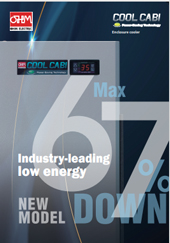Enclosure cooler COOLCABI Non-fluorocarbon Energy saving
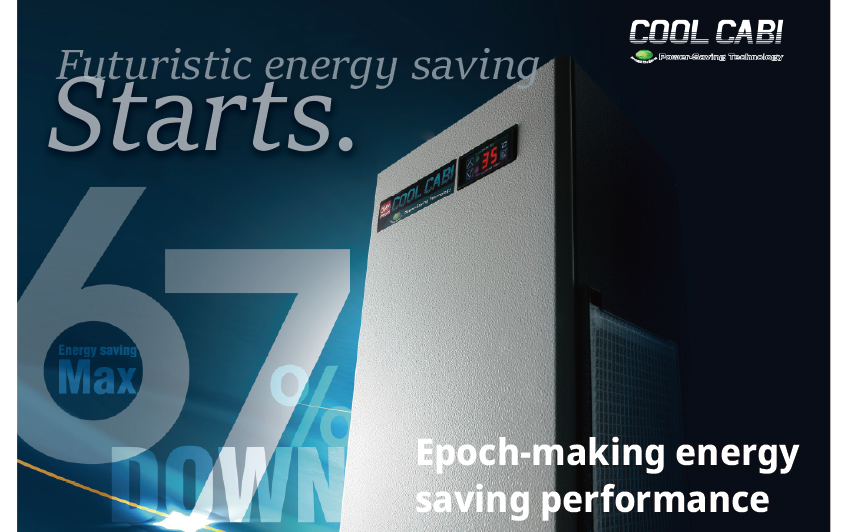
Release on Apr. 1, 2024
Futuristic energy saver has finally emerged.
Non-fluorocarbon enclosure cooler "COOLCABI"
with higher level of perfection
Amid calls for SDGs or carbon neutrality, OHM developed revolutionary energy saver by reviewing conventional structure of enclosure coolers for pursuing higher cooling efficiency and smaller energy use.
Non-fluorocarbon enclosure cooler "COOLCABI"
with higher level of perfection
Amid calls for SDGs or carbon neutrality, OHM developed revolutionary energy saver by reviewing conventional structure of enclosure coolers for pursuing higher cooling efficiency and smaller energy use.
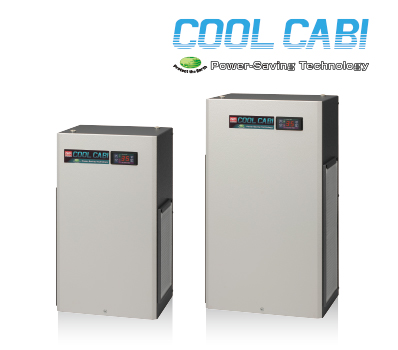
Max. 67% reduction! Industry leading energy saving technology
Optimized the inner layout and flow channel by thermo-fluid analysis. Further, we thoroughly reviewed power consumptions of compressors and DC fans. By employing an inverter, optimum control according to the changes of heat load and external temperature was enabled, which led to cut power consumption up to 67% from our conventional products as well as keeping high efficiency all the time.
※At 35℃ ambient temperature with a load factor of 70%
※At 35℃ ambient temperature with a load factor of 70%

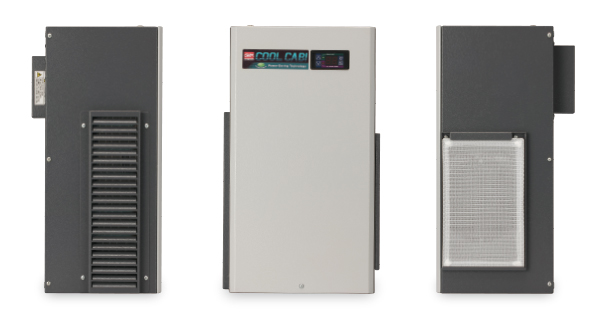
Comparison of power consumption
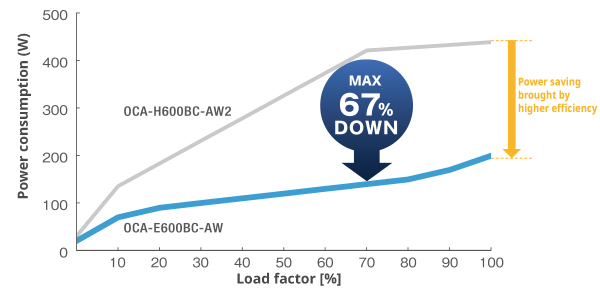
Comparison of annual power usage and CO2 emission
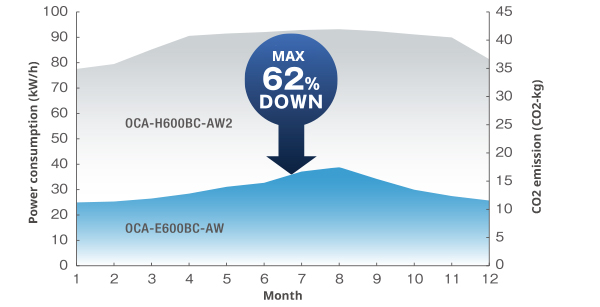
| High-precision control keeps optimum temperature. It leads to reduction of power usage and CO2 emission up to 62%. |
Wide input voltage range
Designed to meet wide range of supply voltages from 100 to 240 VAC to give more flexibility in use in Japan and abroad. You can enjoy the same performance without caring about voltage rantings wherever you are.
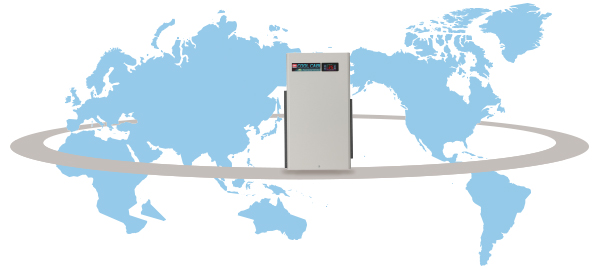
Ease of maintainance
Durable honeycomb filter is reusable by washing. Detachment of fan is easy and quick with one screwdriver only. No special tool is required. Simply connect the lead wire via a relay connector.
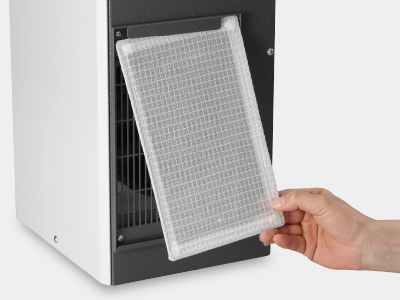
Filter
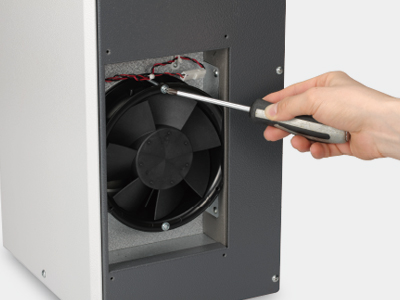
External fan
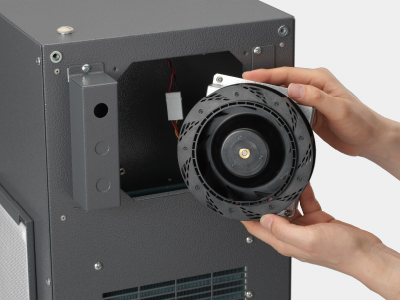
Internal fan
Lineup
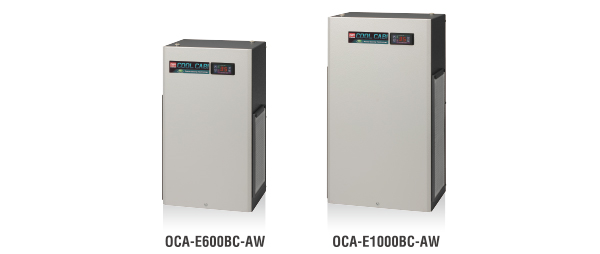
| Type of mounting | Model | Cooling capacity * | Rated voltage (50/60Hz) |
| Lateral mounting | OCA-E600BC-AW | 600W | 100—240VAC |
| OCA-E1000BC-AW | 1000W |
See details at Enclosure cooler COOLCABI Non-fluorocarbon Energy saving
Catalog download
Launch date
Monday, April 1, 2024
For further details please contact us at info-cs@ohm.jp.
*The contents of this article are as of February 2024.
For further details please contact us at info-cs@ohm.jp.
*The contents of this article are as of February 2024.


